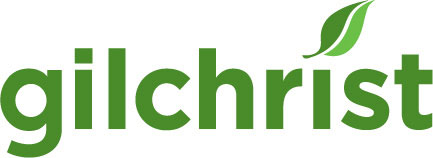What Hospice Quality Means At Gilchrist
Healthcare quality professionals at Gilchrist proudly join the National Association for Healthcare Quality (NAHQ) and those around the country in celebrating Healthcare Quality Week, October 21-27.
At Gilchrist, we don’t just focus on quality one week a year—we take steps all year long to improve quality. Quality at Gilchrist means that each person and family reach their end-of-life goals and that we provide quality tools to clinicians and leaders to guide care at the highest level. Behind the scenes, we have an extensive system of ensuring quality and safety, and continuously improving our care. To learn more, read on.
The Gilchrist System of Quality
The Joint Commission—an organization synonymous with quality in healthcare organizations—stated in their 2015 brief “End-of-Life Care: A Patient Safety Issue” that addressing end-of-life issues is “crucial for maintaining patient safety, which is the central aim of quality.”
The report also points out that older individuals with chronic illness “want a ‘good death,’ without burdensome pain, symptoms and technology.” Gilchrist purposefully embeds these goals and values into our organization and cascades them to all divisions, teams and individuals.
The “Gilchrist System of Quality” is stratified across the organization to gather information at every level, find evidence-based best practices and integrate that knowledge into standard care throughout the organization.
The system includes the following elements:
Root Cause Analysis
Safety and care events are reported and analyzed to identify and correct the root cause. Safety events, such as falls with injury, oxygen safety, and medication errors, are our highest focus.
Gilchrist Executive Dashboard
Measures of safety, quality and compliance, and 30 other metrics that align with the Centers for Medicare & Medicaid Services’ (CMS) Triple Aim—Better Health, Better Care, and Least Waste—are listed on the Executive Dashboard, which is used to track our monthly progress toward these goals.
Process Owner Program
Each metric on the Executive Dashboard is assigned to an organizational leader (process owner) to focus on the improvement of that metric. Process owners meet monthly to share best practices, define barriers to success so that leadership may intervene, and get feedback from colleagues about their action plans.
Lean Weekly Management
Gilchrist uses a Lean Weekly Management program that uses GEMBA Boards. These boards house improvement metrics in a prescribed format to drive improvement at the care or work team level—where the work is done. These metrics typically include safety metrics such as falls with injury, oxygen safety, and medication errors. The goal is to graduate a metric once a goal is reached, share that learning organization-wide, and then initiate a new GEMBA metric.
Person & Family Advisory Council
In October 2018, Gilchrist implemented a Person & Family Advisory Council (PFAC), which is a diverse group representing the collective voice of all individuals and families served. The council collaborates with Gilchrist to better understand the care needs and desires of the people we care for and their families, and to align our care with these preferences.
CMS Quality Reporting
With the goal of driving hospice care improvement at the national level, CMS ranks all hospices based on many measures, including medical treatment and patient and family member experience. The metrics outlined in the table below include the medical treatment metrics.
These percentages are ranked against the national average. As shown, Gilchrist outperforms the national average on each of these medical treatment metrics.



